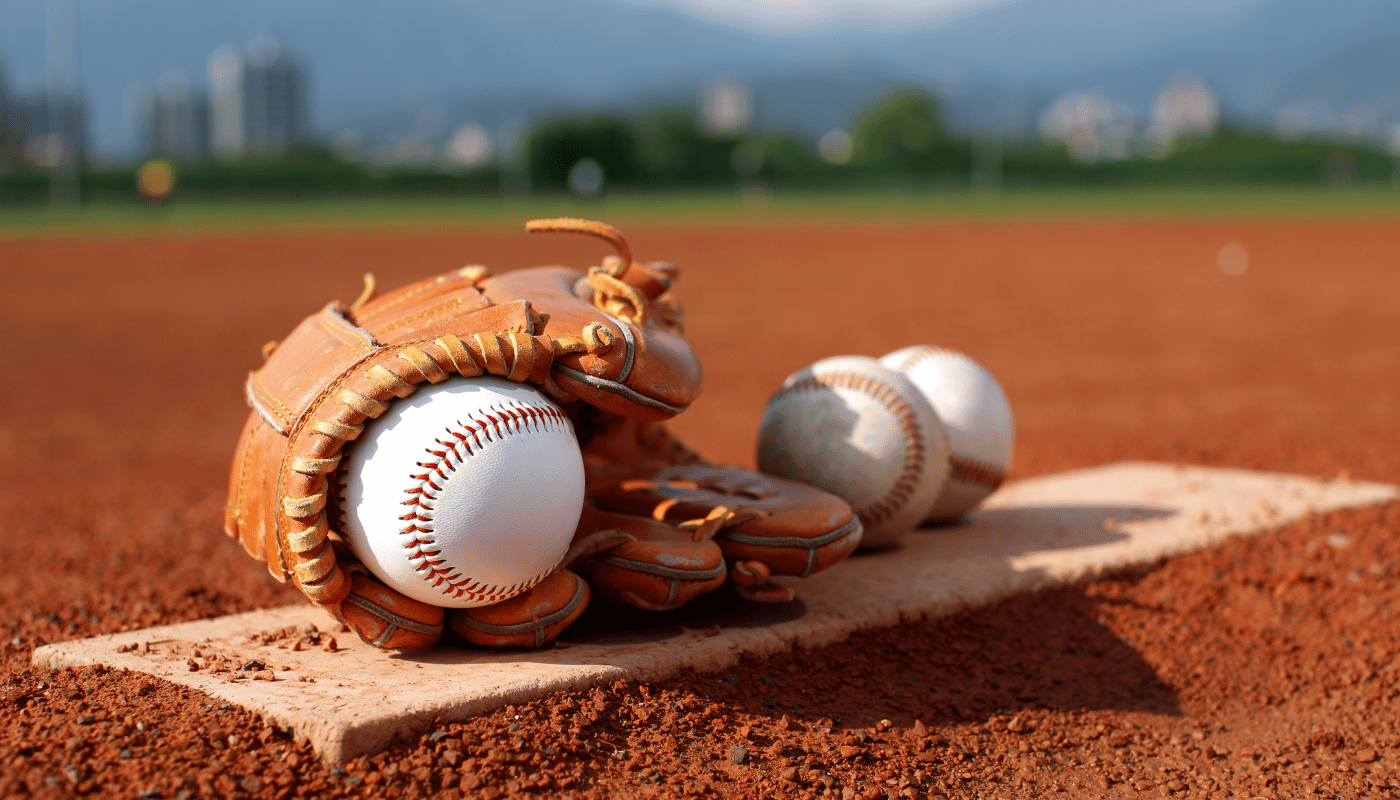One of the most critical equipment for most sports is a glove, and picking the right one is very important in ensuring that one maintains good performance in baseball. The way the glove fits has direct implications on the level of comfort and control that one enjoys while on the field. The glove has been designed in a manner that it is possible to throw and catch a ball with ease. Hence, when one does not have a properly sized glove, they can get injured or perform poorly, so understanding how to size a baseball glove is very important.
One can enhance his or her grip and comfort during play when the glove is properly sized. The glove will help players to focus on the game rather than making adjustments to the equipment. Proper adjustment of the glove goes a long way in achieving a proper fit in hand and playing position.
This guide will walk you through the necessary steps to measure a baseball glove correctly. From tools you’ll need to sizing charts, you’ll find everything you need to choose the perfect glove that enhances your performance on the field. Whether you’re a seasoned player or a beginner, knowing how to measure a baseball glove is a fundamental skill that can make a big difference in your game.
Common Glove Sizes And Their Uses
The type and the size of the glove used in baseball is crucial if one is to enjoy the game. This is because the positions in the field also influence the size of the gloves as either the smallest or the largest gloves may be necessary in those positions. Gloves that are tailored with the correct amplitude, allow for optimal ball grasping, control, throwing and other forms of swift movement that are particularly delicate and accurate. Every player has to determine their preferred glove size based on the position they are playing.
Most youth players generally use gloves with a size range of 9 inches while outfielders have an average of 12.75 inches. For instance, it is common for infield gloves to be more compact and smaller at around 11 inches as they are intended to provide lightweight support and streamline quick plays. Indeed, outfield gloves are much larger in size to facilitate catching of the high throws. So, it can be assumed that every specific position in the field requires a specific glove size for optimum performance.
Here’s A Breakdown Of Common Glove Sizes And Their Uses:
- Infield Gloves (11 to 11.75 inches): Designed for quick movements, these gloves are typically smaller and more compact to allow fast ball transfers.
- Outfield Gloves (12 to 12.75 inches): Larger gloves are necessary for catching high-flying balls in the outfield.
- Catcher’s Mitts (32 to 34 inches): These gloves are specialized to protect the fingers and offer better control when receiving pitches.
- Youth Gloves (9 to 10.5 inches): Smaller gloves made for younger players, designed to fit smaller hands comfortably.
- First Base Gloves (12 to 13 inches): Larger and with a flatter shape to help scoop up throws at first base.
After determining the ideal glove size for a player’s position, it’s important to ensure that the glove feels comfortable and provides a secure fit. A glove that is too large can be difficult to control, while one that is too small can restrict movement and hinder a player’s ability to make accurate throws and catches. Understanding how to measure a baseball glove accurately is the first step in finding the right fit. A well-sized glove can make a huge difference in a player’s performance, allowing them to focus on the game rather than worrying about their equipment.
The proper glove size should fit securely around the wrist and fingers without restricting movement. When trying on gloves, players should ensure that the glove does not feel too tight or too loose. A glove that fits well will enhance a player’s overall experience and give them the confidence to perform their best on the field.
Tools Needed For Measuring
The right tools are vital for accurate glove sizing. Measuring a glove is not simply a matter of stretching it out and marking the sides – a few more tools are necessary in order to do the job properly. With proper measuring tools, you will not have any issues with the glove being too tight because it was made to fit your hand and the manner in which you choose to play.
First on the list of required items is a flexible measuring tape. Flexible measuring tapes are superior to rulers since they are less rigid, enabling them to get in between different parts of the glove for more accurate and precise readings. This is key for any advanced measurements like, heel to glove tips measurement. It is necessary to ensure that the flexible measuring tape can take the shape of the glove, but it should also be rigid enough to ensure accurate measurements.
Other Important Tools
The boundaries of this discussion stretch beyond the aim of our analysis and the tools of measurement, which in this case is a ruler or a straight-edge, are also important because you will be able to check for the specific measurements of length of the glove. Usually, the measurement using a measuring tape is the first step. However, the measuring device comes in handy in determining whether the glove is actually made to size for a baseball glove, which is more so the case when attempting to fit a glove that is either too large or too small. One of the easier ways to avoid these problems at the measurement stage is to combine the use of a tape measure and a ruler.
For these aspects of the measurement, it is also handy if you possess a sort of flat base on which to rest the glove, For more accurate measurement, the flat surface will aid in completely opening the glove to provide its measurement without being hampered by folds that may obscure the right dimensions. A table, or even the floor, would serve this purpose well. If the glove is not spread open as it should be, you can get wrong measurement of the wrist to tip of the glove distance.
In relative terms, when trying to measure a baseball glove, getting the right tools is the first step towards accuracy. The tools on hand serve a specific purpose, ranging from measuring the glove’s shape to ensuring the length is correct. If you’re using a flexible tape and a ruler, you should be able to measure the glove accurately and select the appropriate size.
Measuring the glove yourself before making the purchase is always a wise idea, most particularly when you are in doubt regarding the sizing or when the glove does not meet your expectations. With the right tools, the measuring portion becomes seamless and efficient.
Step-By-Step Guide To Measuring A Baseball Glove
It is important that you take the correct measurements of a baseball glove so that you get an accurate size that best fits your hand and playing style. There are a few steps to follow that will aid you in taking the measurements accurately. This ensures that your glove is not only comfortable but also functional and durable so that you can perform at your best.
To start, you would want to place the glove on a flat surface. Make sure the glove is fully opened, fingers are straight and the palm is facing upwards. This will assist in getting a more accurate reading from the heel of the glove, all the way to the tip of the first index finger.
Following that, take the tape measure that can flex and measure the size of the glove. You would want to start at the base of the wrist strap, and remember to measure it all the way to the tip of the index finger. You would also need to make sure that you follow the contour of the glove while measuring it. After all of that, you would want to take note of how many inches that is.
| Step | Description | Tool Needed |
| Lay the glove flat | Place the glove on a flat surface, palm facing up | Flat surface |
| Measure from heel to tip | Measure from the wrist strap to the tip of the index finger | Flexible measuring tape |
| Record the measurement | Write down the measurement in inches | Ruler or measuring tape |
Once the measurement process is done, make sure that the length is cross-checked with standard glove size charts. These charts will enable you imagine whether the glove is of the correct size for your position and even the type of hand you have.
Before reaching a conclusion, sit down and check the measurements that you have. Even the slightest errors can result in a glove that is uncomfortable or ill-fitting. When these steps are followed and the tools are used effectively, accurately choosing the appropriate glove size using these tools will be possible. This is an important factor to have improved overall performance and comfort during gameplay.
Understanding Glove Sizing Charts
If you want to pick up the right glove, it is important to understand the glove sizing charts as they help in identifying the perfect fitting glove. Glove sizing charts base their calculations on the age, position, as well as the hand size of a player and help assure that the glove meets its expectations. Unlike other manufacturers, which may be slightly different, the principle remains the same, and that is a glove that is the correct fit will always add comfort, control, and performance.
These sizing charts typically categorize the sizes of gloves by a player’s positions such as infielders, outfielders, and catchers, and others. For example, outfielders prefer gloves larger than 11 inches, but smaller than 11.75 inches because it allows easy movements. To catch what the outfielders throw, catchers tend to use mitts larger than the rest of the players to make the catch and protect their fingers. Therefore, mitts measurements do range from 32 to 34 inches.
Key Considerations In Sizing Charts
When reviewing glove sizing charts, there are a few key considerations to keep in mind. One of the most important factors is hand size. Players should measure the circumference of their hand to get an accurate understanding of what size glove will fit best. Another factor is the age of the player, as children and teenagers often need smaller gloves, while adult players tend to use larger models suited for more advanced play.
It is also important to note that some manufacturers cater to specific player needs. For example, a brand like Rawlings provides a sizing chart that takes into account both the player’s position and age group. This ensures that players of all ages and skill levels find a glove that suits them perfectly. Understanding how to measure a baseball glove using these charts will help you select a model that enhances your game while providing comfort and reliability.
By carefully reviewing sizing charts, players can avoid common mistakes such as choosing a glove that is too small or too large. A poorly sized glove can impede performance and cause discomfort, but choosing the right size from the start will give players the confidence to perform at their best. Remember, sizing charts are designed to be a tool, not a strict rulebook. Always test the glove for comfort and fit before making a final decision.
Tips For Choosing The Right Glove
Similarly, it is not just a matter of how big the glove is but so much more when it comes to picking a glove. Field players, no matter if they are beginners or advanced, have a lot of thinking to do before selecting a glove, and these recommendations will make sure one enjoys using it as well.
In addition, think about your position on the pitch when looking for a glove to purchase. Glover are not different sizes for all baseball positions: An outfielder and an infielder, for example, will use different sized gloves. For instance, an infielder will usually need to have a smaller and quicker glove than an outfielder who needs to catch balls thrown from a distance and will need a bigger glove. Specialized gloves are also made for catchers and first baseman. Knowing what position you play and how it affects your glove choice will assist you in making the right choice.
Tips For Selecting The Perfect Glove
- Consider Your Position: Infielders typically use gloves ranging from 11 to 11.75 inches, while outfielders may prefer 12 to 12.75 inches.
- Try Before You Buy: If possible, try on multiple gloves to see which one feels the most comfortable.
- Account for Break-In Time: New gloves often require time to break in before they feel fully comfortable.
- Consult with Coaches or Experienced Players: Get advice from those who have used gloves extensively, as their input can be invaluable.
- Focus on Comfort and Fit: Always ensure the glove fits snugly around the wrist and fingers, without being too tight or too loose.
Choosing the right glove isn’t just about finding a piece of equipment that fits; it’s about ensuring that the glove enhances your performance. A well-fitted glove will allow you to catch more efficiently, throw accurately, and feel more comfortable during long games. The process of how to measure a baseball glove plays a significant role in ensuring that your glove fits properly, so don’t rush through the sizing process. Take your time to consider your options and choose the glove that feels like an extension of your hand.
After selecting your glove, remember that you may need to break it in before it feels comfortable. A new glove can feel stiff and may not provide the flexibility needed for optimal performance right away. Be patient during the break-in period, as a well-broken-in glove will give you better control and feel during the game. The time spent ensuring the glove fits well and performs effectively will pay off in the long run.
Considerations When Choosing The Right Baseball Glove
There is a broader range of factors apart from just positioning and sizing that go into selecting the ideal baseball glove. Your unique shape of hand, personal playing style, and choices should also be useful when selecting gloves, which means selection is not solely based on bias. To perform at your best, the glove is required to fit well and adapt to the motions of your body.
You should also ensure that you select the right material for your glove. Gloves made of leather are the most durable and require the least time to soften, while gloves made out of synthetic fiber are usually less expensive and more comfortable. Choose something with a balance between your expectations and your budget. In addition, there are various brands for different categories of players, so it would be beneficial to read reviews before you start trying different models.
Understanding how to measure a baseball glove is a critical first step in ensuring you select the right glove. Accurate measurement ensures that the glove fits securely around your wrist and fingers, providing the comfort and control you need during the game. A well-measured glove will not only enhance your performance but also make the entire playing experience more enjoyable and effective.




